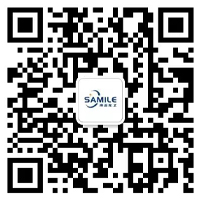Isolate the contaminated area from leakage, set warning signs around it, and cut off the fire source.Emergency responders wear gas masks and general fire protective clothing.Collect with a clean shovel in a dry clean covered container and transport to the waste disposal site.If a large number of leaks, collect and recycle or harmless treatment after disposal.
Protective measures
Respiratory protection: When the concentration in the air exceeds the limit, wear a mask respirator.When emergency rescue or evacuation, it is recommended to wear self-contained breathing apparatus.
Eye protection: Wear chemical safety goggles.
Protective clothing: Wear protective clothing against acid and alkali.
Hand protection: Wear chemical-proof gloves.
Others: Shower and change clothes after work.Pay attention to personal cleanliness and hygiene.Regular physical examination.
First aid measures
Skin contact: remove contaminated clothing and rinse thoroughly with plenty of running water.
Eye contact: immediately open upper and lower eyelids, with flowing water or physiological saline rinse.Go to a doctor.
Inhalation: Quickly leave the scene to fresh air.Keep your respiratory tract open.Nitrogen is injected when breathing is difficult.When breathing stops, give artificial respiration immediately.Go to a doctor.
Ingestion: Gargle, drink milk or egg white, seek medical advice.
Extinguishing method: fog water, foam, carbon dioxide, dry powder, sand soil.
Matters needing attention
Topical use of the product may cause mild irritation locally.Ointments should not be stored at high temperatures.
Environmental hazards: harm to the environment, water and air pollution.
Danger of fire and explosion: flammable, irritating.
Hazard characteristics: combustible in case of open fire and high heat.
Toxicology data
It is highly toxic to microorganisms, but its sodium salts have very low toxicity.For rat transoral LD50:1700mg/kg.Oral administration of less than 0.5g per day is not toxic to the body, and it is not harmful to health even if the dosage is not more than 4g.In human and animal tissues, it can be combined with glycine, a protein component, to detoxify and form horseuric acid
absorption
Oral ingestion of benzoic acid and sodium benzoate in the gastrointestinal tract of laboratory animals or humans can be assumed to be 100% absorbed.In humans, plasma concentrations peak at 1-2 hours.
Toxicity of performance
Skin hazards: redness, burning sensation, itching.
Inhalation hazards: Cough, sore throat.
Eye damage: Redness and pain.
Danger of accidental ingestion: abdominal pain, nausea, vomiting.
Health hazard
Invasion way: inhalation, ingestion.
Health hazard: Mildly irritating to skin.Vapors irritate the upper respiratory tract, eyes, and skin.The product has no obvious harmfulness in contact under normal circumstances.
Acute toxicity
502530mg/kg (rat via mouth);2370mg/kg (mouse transoral);500mg/kg (oral);The minimum amount of poisoning is 6mg/kg orally, and skin damage may occur.
Hazard characteristics: in case of high heat, open flame or contact with oxidizer, there is a risk of combustion.



